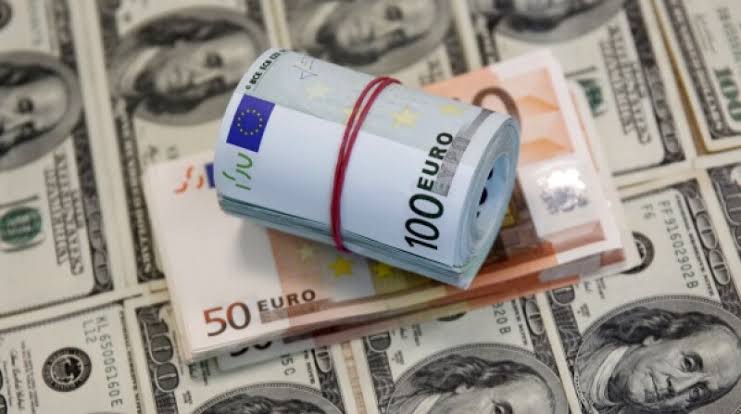Oct 22, 2022
VOT Research Desk
Market Insights, Considerations & Analytics
GBP/USD held onto weekly advances despite the UK political disaster.
Dollar bulls were encouraged by rising yields and the assertive Fed rate rise stance.
As the British political instability worsens, attention goes to high-caliber US and UK data.
In yet another eventful week for UK politics, the GBP/USD exchange rate moved by about 300 pip. Liz Truss’ departure as British prime minister did provide buyers of the GBP some peace of mind, but rising US Treasury yields limited the pair’s upward movement. As markets prepare for a busy week, the disparity in policy between the BoE and the Fed also became apparent. Political developments in the UK and anticipated Fed rate hikes will continue to be the main drivers.
Bulls profited on the new fiscal plan announced by the new UK Finance Minister Jeremy Hunt to kick off the week in a big way for cable, which reversed Friday’s decline. After Hunt “almost entirely” revoked the tax cuts offered in his immediate predecessor mini-budget and pulled down assistance for energy bills, the pair reached its highest level in eight days at 1.1439. On the back of hopes for the UK’s new fiscal framework, risk flows started to flow again at the beginning of the week, crushing the US dollar against its main competitors. The financial markets were relieved as the UK gilt yields fell.
A cautious attitude returned to the market toward the middle of the week after Beijing reported the highest number of COVID cases in four months. Global yields increased as a result of aggressive expectations tightening and rising concerns about a recession.
Inflation in the UK rose at a double-digit rate of 10.1% year-over-year in September, marking the highest level since 1982.Concerns that faster rate hikes by global central banks could set off a recession grew as inflation in the euro area remained at a record high.
As Tory rebels continued their plan to topple the Truss government, up to 100 letters of no confidence were sent to Graham Brady, Chair of the powerful backbench 1922 Committee, urging her to resign. Cable tested bullish commitments below 1.1200 for the next two days after continuing its slide on Wednesday.
The cable was put under additional downward pressure in the second half of the week as a result of the renewed recovery of the US dollar, which was fueled by firmer Treasury yields and hawkish Fed commentary.
While benchmark 10-year US rates rose above the crucial level of 4.25 percent, 2-year yields reached 15-year highs. Given that inflation remains very high, markets are pricing in the possibility that the Fed will continue to raise rates until a terminal rate of 5% or even higher is reached. Consequently, the US dollar index regained its bullish momentum and reclaimed the 113.00 support level.
GBP bulls received a brief respite on Thursday when UK Prime Minister Truss resigned. After a turbulent and historic short term in which her economic policies threw financial markets into turmoil, Truss resigned. However, since Truss resigned, a divided party is looking for a leader who can bring its divided factions together. This has stifled the recovery of the GBP/USD and rekindled uncertainty regarding the political situation in the UK.
Despite dollar bulls refusing to give in in light of the persistent rise in US rates over the course of time, GBP sellers maintained control toward the end of the week. The widening monetary policy gap between the Fed and BoE also plays a role, as the UK central bank Deputy Governor Ben Broadbent stated on Thursday.
Due to Broadbent’s concerns about the current market, terminal rate expectations have decreased by approximately 15 basis points since Wednesday’s close. Cable bulls were kept at bay by disappointing UK Retail Sales and a data-starved US docket. Retail sales in the UK fell by 1.4% in September, which was lower than the expected 0.5% and 1.7%.
Core retail sales fell 1.5% month-over-month, excluding auto and motor fuel sales, compared to expectations of -0.3% and -1.6% in August.
The UK’s weak consumer spending, rising inflation, and political chaos are likely to put the central bank in a difficult position. A “blackout period” for Fed policymakers will prioritize economic releases during a pivotal week. Traders anticipate significant top-tier macro news from both sides of the Atlantic in the coming week. Political developments in the United Kingdom will also be closely monitored as a new Prime Minister is chosen.
On Monday, an explosive week will begin with the release of the S&P Global Preliminary Manufacturing and Services PMIs from the United Kingdom and the United
States. Additionally, US Treasury Secretary Janet Yellen is scheduled to deliver a speech in New York later that day.
On the political front in the United Kingdom, nominations will end on Monday at 14:00 GMT, and candidates are likely to require the support of at least one hundred MPs to run. There are rumors that former chancellor Rishi Sunak and House of Commons leader Penny Mordaunt are candidates, but no MPs have publicly stated that they are running
.
The UK CBI Industrial Orders Expectations data will be made available on Tuesday. The Chief Economist of the BOE, Huw Pill, is scheduled to speak at an Office for National Statistics event in London. In the United States, the Consumer Confidence data from the Conference Board (CB) will be included alongside other minority reports.
China’s GDP, activity, and trade data for the third quarter will be released on Wednesday, after a week’s delay. Investors’ risk appetite and, ultimately, the higher yield of the pound may be significantly affected by the data.
If the Fed decides to raise interest rates, the advance Q3 GDP data from the United States on Thursday will be crucial. The US Durable Goods data will also be released alongside the growth figures. Cable may suffer as a result of the European Central Bank (ECB)’s decision to raise interest rates on Thursday.
There aren’t many useful economic data from the UK on Friday. Personal Spending, the Revised UoM Consumer Sentiment, and the US Core PCE Price Index will all be closely monitored as a result. The new Prime Minister of the United Kingdom will also be announced on the final trading day.









